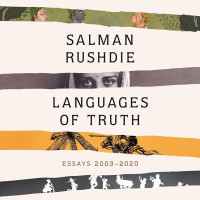Books
A tricky tangle of love and identity
‘Adiyeka Paila’ explores the intricate feelings and societal influences shaping human relationships through the lives of its protagonists, Astitwa and Anasuya.
Rishika Dhakal
Written by philosophy enthusiast Bishnu Sapkota, ‘Adiyeka Paila’ is a novel that explains the complicated dynamics of feelings in human relationships.
Astitwa and Anasuya are the protagonists of the novel. Another character of the story, Bandana, stands to be the deuteragonist.
And no, the book is not about the love triangle. Instead, it is about a candid narration of each character's feelings, which ultimately shape their life.
Astitwa is introduced as a university teacher of Kirtipur. He teaches English literature to university students. Anasuya is an MBBS student.
Astitwa and Anasuya meet through Anusaya’s father, Mani, a professor at Kirtipur University. To assist Astitwa with completing his thesis, Astitwa’s friend Pramod advises him to coordinate with Mani.
Their first interaction is similar to the novel ‘Lolita’ setting. Astitwa, in his 20s, is seven years older than Anusuya, who is still a minor.
Anasuya instantly falls for Astitwa upon seeing him in her house. Additionally, as an MBBS student passionate about literature, it's easy to see why Anasuya would develop an infatuation with someone knowledgeable, single, and a literature lover like herself.
The pair starts going on dates, and their conversation often concerns philosophically defining love.
Astitwa’s take on love combines all the principles he has absorbed as a university student. Contrary to this, Anasuya is introverted in expressing herself yet bolder and wiser when approaching matters of love.
She postulates that love has little to do with rationality and reasoning.
However, Astitwa states, “Love was made to ease the complexities of navigating societal norms and emotional landscapes. Therefore, there is no guarantee that tomorrow love will not wither.”
The author has effectively assessed the maturity levels between boys and girls in love. His analysis addresses the widely debated and often clichéd notion that girls generally show more maturity than boys.
The journey of their attraction blooming into love is characterised by beautiful butterfly moments that aren’t discussed in depth in other books I have read.
The discourse surrounding such intricate details assures the reader like it has assured me, that it is expected to fixate on the qualities of someone you admire. The following dialogue perfectly captures the essence of one’s obsession.
“After all, everyone is made up of the elements of feelings. No matter how many logical arguments we make, our actions are driven by our emotions”.
The entire plot of the novel rests on a single premise, much like in movies, where an actor portrays various characters in different films, the roles in the novel shift and change based on the circumstances and contexts the characters face.
Similarly, human beings play various roles in their own lives. Our existence is dynamic and multifaceted, enabling us to embody different versions of ourselves as we navigate different phases and experiences.
The author’s background as a columnist may have inspired the progression of social issues in the novel.
Astitwa’s students, Bandana and Mohan, are victims of the repercussions of the Maoist Conflict in Nepal.
Mohan, a member of the Madhesi community, moves to Kathmandu to study for his master's. Once there, he gains a clearer perspective on the silent discrimination his community faces.
An article by JB Pun Magar on the topic ‘Manu Smriti, Muluki Ain and the rise of Bahuns’ rightly captures the dilemma that Mohan faces regarding the accusations of the ruling caste where they maintain that indigenous people incite division with ethnicity-based federalism. At the same time, the indigenous people contend that the ruling class perpetuates racism through historical privilege and marginalisation of ethnic communities.
Similarly, Bandana, who has lost her father during the Maoist insurgency, confides in Astitwa regarding her struggles with the grief of losing a parent.
However, the bond that Anasuya and Astiwa share isn’t love, as the author mentions through his exaggerated explanation of love, feelings, and rationality.
Either one has attachment issues, or, in modern language, they are in a “situationship”.
The novel is slow running in its pace yet steadfast in developing new arcs in the plot.
Before Bandana, Astitwa and Anasuya had already stopped talking to each other. This incident not only takes a toll on Anusuya's mental health but also disrupts her relationship with her parents.
The fallout occurs because Astitwa insists that Anasuya reveal their relationship to her parents. Despite her opposition, Anasuya complies with her boyfriend's demands.
Her parents are not entirely opposed to this new information, yet it is a task for them, especially the father, to accept that his daughter will grow up to be an adult.
As the story unfolds, Astistwa receives a scholarship for his PhD program from Notre Dame University, one of the most prestigious universities in the US.
After spending nearly six years in the US, Astitwa returned to Nepal despite the opposition of his colleagues from Kirtipur who had settled abroad.
At this particular juncture, the author has painted the picture of the stark realities faced by many Nepali students studying abroad.
The novel does not conclude with a typical Cinderella ending, where estranged lovers reconcile. Instead, it features a mature and unconventional ending, allowing readers to uncover the explanation as the story progresses gradually.
However, the novel’s characters stand to be romantic and slightly idealised, which makes it difficult for an ordinary reader to fully encapsulate the duality and complexities portrayed by the author.
In hindsight, the novel is an excellent portrayal of one’s deepest feelings, which are layered by the principles and conventions built by society around us.
Through the characters, the author urges the readers never to eschew the inevitable waves of emotions that shape our deepest selves.
Drawing from his experience living abroad, the author implies the importance of culture and native language in authentically expressing one’s emotions.
Adiyeka Paila
Author: Bishnu Sapkota
Publisher: Fine Print
Year:2023




 13.12°C Kathmandu
13.12°C Kathmandu











